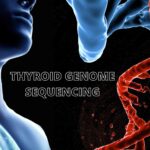Stomach cancer (also called gastric cancer), cancer cells usually begin on the inner lining of stomach walls and then penetrate deeper into the stomach walls as the cancer develops. The tumor may grow to involve nearby organs like the liver and pancreas.
Stomach cancer is one of the most common cancers worldwide, but it is seen less often in India. The number of stomach cancer cases has been steadily declining over the last few decades. This is possibly because of widespread use of refrigeration that increased access to fresh food without preservatives and bacterial contamination.

Most people (up to 95 percent) develop a stomach cancer called adenocarcinoma, which starts in the tissues that make up the stomach lining.
There are three types of adenocarcinomas:
- Noncardia (Distal) Stomach Cancer
This type of stomach cancer may be related to long periods of inflammation and irritation in the lower part of the stomach. It’s often associated with chronic infection of bacteria called Helicobacter pylori and is more common in developing countries than in other parts of the world.
- Proximal Stomach Cancer
This type of stomach cancer starts in the first (proximal) part of the stomach and may extend into the gastroesophageal junction (where the esophagus joins the stomach). This cancer is more common in the United States than in other parts of the world, and tends to start in people who are obese or have gastro-esophageal reflux disease.
- Diffuse Stomach Cancer
This aggressive cancer grows rapidly in the cells of the stomach wall. It doesn’t form a mass or a tumor, so it can be challenging to diagnose. It tends to start in younger people with a family history of the disease or a related genetic syndrome.
Less common types of gastric cancer include gastrointestinal stromal tumors, which start in stomach muscle or connective tissue; carcinoid tumors, which start in the stomach’s hormone-producing cells, and lymphoma, which starts in the stomach’s immune cells
the early stages of stomach cancer can be easy to miss. The symptoms, which can include an upset stomach and general stomach discomfort, are quite common and usually aren’t related to anything serious. For example, an upset stomach can be mistaken for indigestion or a stomach virus. For these reasons, diagnosing stomach cancer in its earliest stages can be challenging.
Some symptoms that could be caused by stomach cancer when it’s in the early stages include:
- constant stomach pain, indigestion, or discomfort
- heartburn
- bloating, especially after eating
- mild nausea
- loss of appetite
- fatigue
As stomach cancer becomes more advanced, the symptoms become more prominent and noticeable. They can include:
- unexplained or unintentional weight loss
- vomiting after meals
- stomach pain, especially after meals
- trouble swallowing
- weakness
- belching (burping)
- fluid buildup around the stomach (called ascites)
- the development of a yellow tint to the skin or the whites of the eyes (called jaundice)
- blood tests that show anemia
- a persistent stomach ulcer
Stomach cancer has several known risk factors. Some you can control, others you can’t.
Your diet and lifestyle choices can play a role in the risk for developing this cancer, for example. Using tobacco and drinking a lot of alcohol can increase your risk, as can a diet high in salted, smoked, or pickled foods.
Some studies also indicate that a diet low in a mineral called selenium, which is present in various nuts, fish, and meats, can increase your risk for the disease.
Risk Factors You Can’t Control
Illnesses that lower the level of acid in your stomach can increase your risk of developing gastric cancer. These include the autoimmune disorder pernicious anemia and a rare illness called Ménétrier disease that causes the growth of large folds in the stomach.
Infection with the bacterium Helicobacter pylori, which can cause chronic inflammation in the inner layer of your stomach, can also lead to the development of precancerous tissue and gastric lymphoma in some cases.
You may also be at increased risk for gastric cancer if you have close relatives with the illness, or if you are of Asian, Eastern European, or South American heritage. For reasons that are still unclear, people with type A blood are also at higher risk.
Inherited Illnesses that May Increase Your Risk Include:
familial adenomatous polyposis (FAP)
hereditary diffuse gastric cancer (HDGC)
Peutz-Jeghers syndrome (PJS)
hereditary nonpolyposis colorectal cancer, also called Lynch syndrome
CDH1 mutations and mutations in other genes such as BRCA1 or BRCA2
It’s important that we are able to accurately diagnose and stage your stomach cancer to determine the best treatment approach for you. Improvements in our ability to identify subtle but important differences among various types of stomach cancer have also influenced how effectively we are able to treat the disease.
In addition to understanding the condition of your overall health and any symptoms you may have, your treatment team will likely use one of the following tests to diagnose stomach cancer.
Endoscopy
In an endoscopy, a doctor inserts a thin, lighted tube (an endoscope) into your mouth, down your esophagus, and into your stomach while you’re sedated or under anesthesia. The endoscope allows your doctor to look at the inner lining of the stomach wall. It can also be used to take a sample of any areas your doctor wants analyzed by a pathologist (a doctor who specializes in diagnosing disease).
Barium X-Ray
In this test, you drink a liquid solution containing barium, a silver-white metal that shows up on an x-ray and helps doctors see a clear image of any potential abnormalities.
Once we establish a diagnosis, we’ll want to determine the stage of the cancer and build a customized plan of care for you.
Once your treatment team confirms your diagnosis, we’ll use imaging tests to determine whether the cancer has spread beyond your stomach. This is known as the staging process, and it’s a critical step in customizing a plan of care that fits your unique needs.
Our gastric cancer experts use the TNM system to describe the stage of a cancer:
T stands for how deep the tumor is in the stomach wall
N represents whether the tumor has spread to nearby lymph nodes
M indicates whether cancer has metastasized — that is, spread — to other parts of the body
One or more of the following tests will help your team determine the stage of a gastric tumor:
CT scan
This scan can find the location and extent of the tumor. It provides your treatment team with 3-D images of your stomach. A CT scan can include a special dye that is designed to enhance the image.
PET scan
This scan involves the injection of a small amount of a radioactive substance that reveals any cancerous cells (cancer cells absorb the substance).
Endoscopic ultrasound
With this test, your doctor inserts an endoscope (a thin, lighted tube) into your mouth and then down into your stomach. An ultrasound probe at the tip of the endoscope bounces sound waves off your stomach’s walls to create a highly detailed picture of your abdominal area, including nearby lymph nodes and organs.
Laparoscopic staging
During this minimally invasive surgical procedure, your doctor inserts a laparoscope (a thin, lighted tube with a camera on its tip) into your abdomen through a small incision in the skin. The image is projected on a large viewing screen. Your surgeon inspects the inside of the stomach and removes tissue samples using specially designed surgical instruments. The surgeon can also inspect the outside wall of the stomach, examine lymph nodes, and evaluate the surfaces of other nearby organs to determine if the cancer has spread to those areas.
Stomach cancer continues to become more treatable thanks to improvements in staging the disease, along with advances in surgical technology and expanding recognition of the different types of gastric cancer. And as doctors evaluate and treat more people with early-stage tumors, increasing numbers of people are surviving stomach cancer.
Surgery (gastrectomy) is the most common treatment approach, especially when the illness is at an early stage. For many people with gastric cancer, minimally invasive surgical techniques provide the best option since they tend to lead to fewer complications, shorter recovery times, less need for pain relief, and reduced risk that the cancer will return compared with open surgeries. Our surgeons are global leaders in this area, having performed more laparoscopic stomach procedures than any other cancer center in the country.
For more advanced stomach cancer, your care team may recommend treatments in addition to surgery, such as chemotherapy, radiation therapy, or a combination of these approaches. These therapies may help you live longer and experience fewer symptoms.
Developing a Care Plan for You
In creating your care plan, we consider such factors as the location of the cancer, how deep it is in your stomach, whether it’s metastasized (spread) to other parts of the body, and previous treatments you may have received.
Our effectiveness in treating this cancer has also been enhanced by our improved ability to identify subtle but important differences among various types of stomach cancer and to pinpoint the stage of your condition.
Managing Symptoms and Side Effects
Our specially trained staff is available to help you manage side effects of stomach cancer treatment such as pain and nausea. For example, one way to avoid bothersome symptoms is to eat smaller, more frequent meals following surgery. Because the stomach plays an important role in vitamin absorption, we may also prescribe dietary vitamin supplements.
Surgery is a common treatment for stomach cancer, especially when it’s in its early stages. Depending on your situation, we may incorporate minimally invasive surgical techniques when performing gastrectomy to help lessen the risk for complications, shorten your recovery time, and minimize pain.
Stomach cancers that are advanced or aggressive may require a partial or total gastrectomy.
Partial gastrectomy involves removing part of your stomach and the nearby lymph nodes (lymphadenectomy) to determine if they contain cancer cells. Depending on the tumor’s location, your surgeon may also remove parts of other tissues and organs.
Total gastrectomy is an appropriate treatment if you have stomach cancer that’s advanced but hasn’t metastasized (spread) to other organs. Your surgeon removes your entire stomach and may also remove parts of other organs and tissues near the tumor. To enable you to continue eating and swallowing normally the surgeon then connects your esophagus to your small intestine.
The Minimally Invasive Surgery Option
A gastric surgeons have been leaders in using minimally invasive surgical techniques to help treat stomach cancers. Your treatment team will meet with you to discuss your two primary options: laparoscopy or robot-assisted surgery. Both techniques can help shorten your recovery time and reduce your risk for complications.
- Laparoscopy: With his approach, your surgeon inserts a laparoscope (a thin, lighted tube with a video camera at its tip) into your abdomen through a tiny incision in the skin. He or she can then operate through this small opening with special instruments.
- Robot-assisted surgery: With this approach, your surgeon uses a robotic surgical tool to perform the operation from a console that displays a magnified 3-D image of the inside of your abdomen, highlighted with a special fluorescent dye.
Predict How You’ll Do after Stomach Surgery
Our gastric carcinoma nomogram is an online tool can predict how well you will do after surgery for stomach cancer. The results of your nomogram can help your treatment team adjust your plan of follow-up care as needed.
Systemic Therapy for Kidney Cancer
We use different treatments if the kidney cancer has spread through the blood and started new growth in other places. Your care team will talk with you about options for systemic therapy.
Systemic therapy is when medications are given intravenously (through an IV) or as pills. These drugs travel in the blood to reach cancer cells in different parts of your body. You will see your care team regularly while on such treatment, in order to make sure you are doing well and to make any adjustments that are needed.
If you are getting systemic therapy for metastatic kidney cancer, you will have imaging with CT or MRI scans done every few months. These scans help your care team monitor how well treatment is working.
The 2 main types of systemic therapy for kidney cancers are molecularly targeted treatments and immunotherapy. Cytotoxic chemotherapies are common for other cancers. They do not work for most types of kidney cancer, and we rarely use them.
Targeted Therapy
Targeted therapies are a standard tool we use to manage kidney cancer that spread to other body parts (metastatic disease). Targeted therapies have been available since the mid-2000s. Many of the targeted therapies available today originally were tested in clinical trials by doctors at KIM’S. These drugs are based on our deep understanding of the molecular changes in this kind of cancer.
Targeted therapies work by focusing on activities that drive the growth of cancer cells. Some target blood vessels that supply nourishing blood to tumors. Others directly block proteins that make kidney tumors grow and spread. Almost all targeted drugs are pills that you take at home.
Immunotherapy
Drugs called checkpoint inhibitors are standard treatment to manage kidney cancer that has spread to other body parts (metastatic disease). Checkpoint inhibitors are immunotherapy drugs given to you by infusion through an intravenous (IV) line into your vein. They work by taking the brakes off the immune system and allowing your own immune cells to attack your cancer.
Many kidney cancers have a lot of immune cells that are “asleep.” This type of drug can reactivate, or wake up, the immune cells to fight cancer and attract additional immune cells from other parts of your body. These medications often work well against kidney cancer.
They are given intravenously and require regular visits to the clinic. Treatments usually are given in an outpatient setting, with no need for hospitalization.
Systemic Therapy with Drug Combinations
The strategy behind drug combination treatments is to attack the cancer from different angles at the same time. Some treatments combine targeted therapies (pills taken at home) with immune checkpoint inhibitors (drugs given by IV in the clinic). Other treatments may combine 2 targeted pills or 2 intravenous drugs.
Radiation therapy uses high-energy rays or particles to kill cancer cells. At Kims we often use this approach after stomach cancer surgery if we think it might help you. Your treatment team may recommend radiation therapy by itself or along with chemotherapy.
For example, if surgery isn’t an option for you, radiation therapy may help make you more comfortable by reducing your symptoms. We can use sophisticated technologies to deliver radiation directly to tumors in and around your stomach while limiting exposure to nearby healthy tissue.
Our radiation specialists monitor how you’re doing during as well as after treatment using advanced imaging and specialized techniques. We may also recommend a clinical trial that is studying a new combination of chemotherapy and radiation therapy.
- Image-Guided Radiation Therapy
With image-guided radiation therapy (IGRT) we can treat tumors with even more accuracy by taking multiple images of the tumor during treatment. This helps us make sure we are aiming the beam of radiation to the correct area and not damaging any other tissue nearby.
- Respiratory Gating
Because your stomach can shift when you breathe, our radiation therapists use respiratory gating to deliver radiation at specific points in your breathing cycle. Real-time CT scans are used during your treatment session to determine the best position of the tumor for giving radiation.
- Radiation Safety
Keeping you as safe as possible during radiation therapy is as important to us as treating your cancer. Our medical physicists work closely with your radiation oncologist to carefully plan the radiation dosage before your treatment. Medical physicists will be there during your treatment to ensure that the radiation is delivered precisely where it’s needed.




